In recent years, the concept of interactive landscapes has gained popularity, transforming traditional outdoor spaces into dynamic environments that offer a blend of beauty, convenience, and sustainability. By integrating smart technology, these landscapes not only enhance the aesthetic appeal but also provide practical solutions for modern living. Therefore, this blog explores the essence of interactive landscapes, the role of smart technology, real-world applications, and future trends in this innovative field.
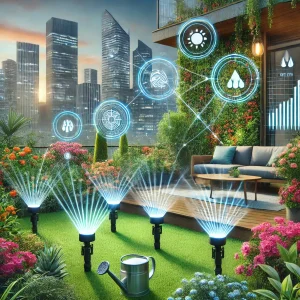
Definition and Overview of Interactive Landscapes
Interactive landscapes refer to outdoor spaces that utilize advanced technologies to create engaging and responsive environments. Consequently, these landscapes interact with users and the environment, offering features that adjust automatically to changing conditions or user preferences. From smart irrigation systems that conserve water to automated lighting that enhances ambiance, interactive landscapes bring a new level of functionality to outdoor living.
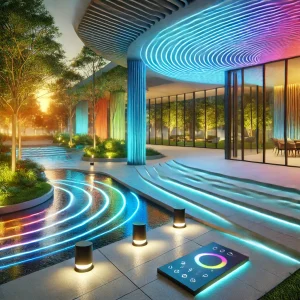
The Role of Smart Technology in Enhancing Outdoor Spaces
Smart technology plays a pivotal role in the development of interactive landscapes. By incorporating devices and systems that communicate with each other and adapt to environmental changes, these landscapes become more efficient and user-friendly. Moreover, key technologies include sensors, controllers, and communication networks that work together to optimize various aspects of the landscape.
For example, weather sensors detect rain and automatically adjust irrigation schedules to prevent overwatering. Similarly, smart lighting systems can be programmed to change colors or brightness based on the time of day or specific events, creating an inviting atmosphere for gatherings or relaxation.
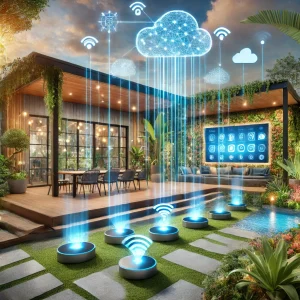
Examples of Smart Technologies in Interactive Landscapes
- Automated Lighting: Smart lighting systems such as Philips Hue offer customizable lighting solutions controlled via smartphone apps. These systems allow users to change the lighting scheme according to their mood or activity, enhancing the overall ambiance of the outdoor space.
- Smart Irrigation: Products like the Rachio Smart Sprinkler Controller use weather data and soil moisture sensors to optimize watering schedules, ensuring plants receive the right amount of water while conserving resources.
- Outdoor Entertainment Systems: Systems like Sonos outdoor speakers integrate with smart home setups to provide high-quality audio experiences. Users can control music and volume through their smartphones, creating the perfect soundscape for any occasion.
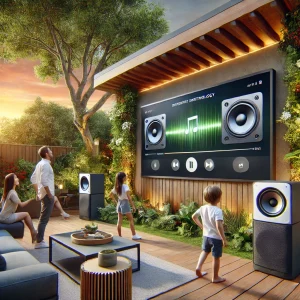
Benefits of Incorporating Smart Technology
Integrating smart technology into landscapes offers numerous benefits. Firstly, convenience is a significant advantage, as automated systems reduce the need for manual intervention, allowing homeowners to enjoy their outdoor spaces with minimal effort. Additionally, sustainability is promoted through smart irrigation and lighting systems that help conserve water and energy. Enhanced user experience is another benefit, with interactive features creating a more engaging environment, making outdoor spaces more enjoyable for activities like entertaining, relaxing, and gardening.
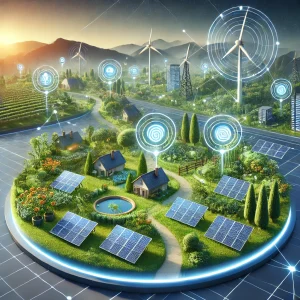
Real-World Applications and Case Studies
Several real-world applications illustrate the impact of smart technology on interactive landscapes. For instance, The High Line in New York City uses smart irrigation systems to maintain its diverse plant life, ensuring efficient water usage across its expansive area. Furthermore, the Googleplex Campus in Mountain View, California, features interactive landscapes with automated lighting and irrigation systems, creating a sustainable and inviting environment for employees.
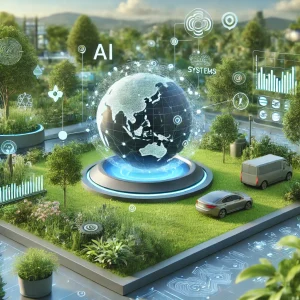
Future Trends in Interactive Landscapes and Smart Technology
As technology continues to advance, the future of interactive landscapes looks promising. Emerging trends include integration with AI and machine learning, where AI-driven systems can analyze data from sensors to predict and respond to environmental changes more accurately. Additionally, augmented reality (AR) applications can help users visualize landscape designs and make real-time adjustments before implementing changes. Renewable energy sources, such as solar-powered devices and systems, will further enhance the sustainability of interactive landscapes.
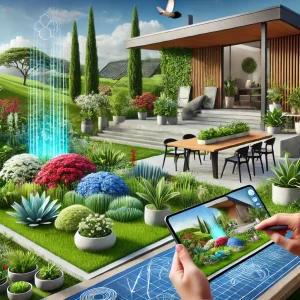
Practical Tips for Implementing Smart Technology
Homeowners and landscapers can follow these practical tips to integrate smart technology into their outdoor spaces. To start, begin with a few key technologies, such as smart lighting or irrigation, and expand gradually. It is also essential to choose compatible devices, ensuring that all smart devices and systems are compatible with each other for seamless integration. Finally, consider professional installation for complex setups, as it can ensure optimal performance and longevity.
In conclusion, interactive landscapes represent the future of outdoor living, combining the beauty of nature with the convenience of smart technology. By embracing these innovations, homeowners and landscapers can create engaging, sustainable, and enjoyable outdoor spaces that enhance the quality of life.